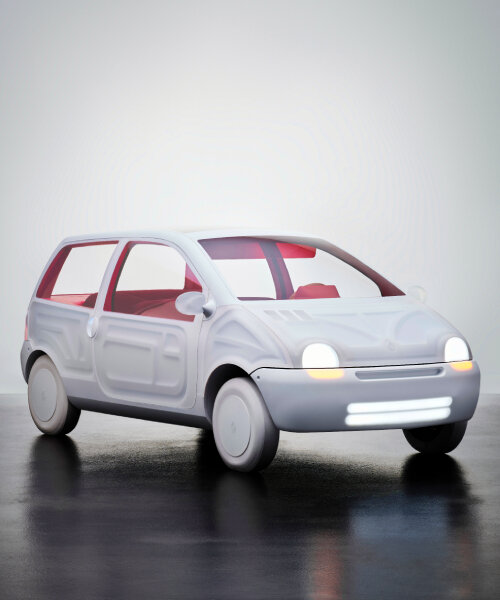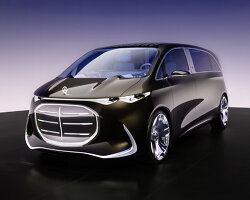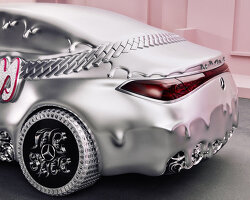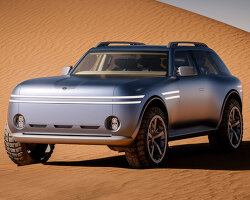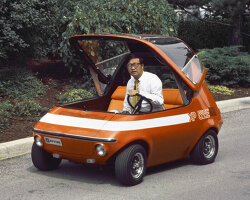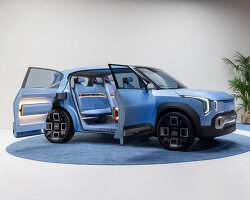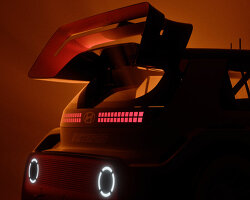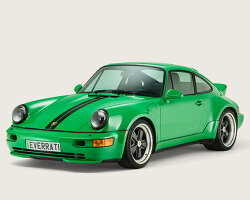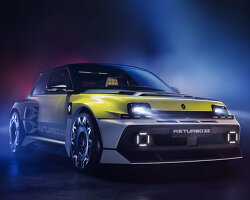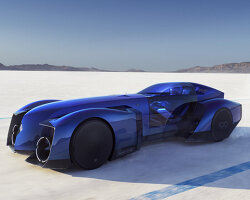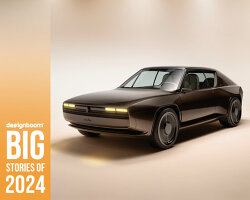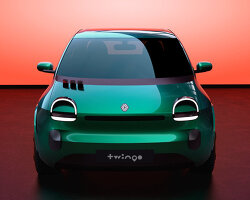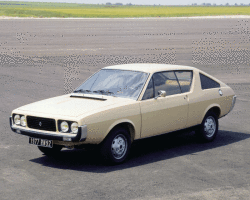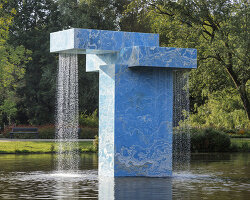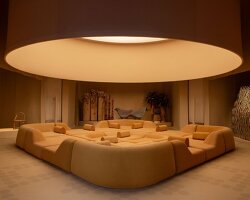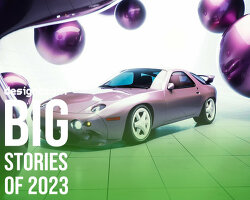Sabine Marcelis reinvents 1993 Renault Twingo
Sabine Marcelis and Renault take the electric city car Twingo for a velvety spin, arranged and imagined from a designer’s perspective. Renault has commissioned the designer to revisit the design of the electric minicar Twingo and celebrate its 30th anniversary after its launch in 1993. Her work follows in the footsteps of Mathieu Lehanneur, who honored the 60 years anniversary of the Renault 4 with Suite N°4, and Pierre Gonalons for the 50 years of the Renault 5 with the R5 Diamant.
Sabine Marcelis’ works are synonymous with elegant forms, pure materials, and the use of light, three themes that grace her interpretation of Renault’s Twingo. From the onset, the white car frame already alludes to the sensuous interior that seems to peek through the windows. In an interview with designboom, Sabine Marcelis reveals that she has never worked on a car before, making her collaboration with Renault for Twingo a first in her design arsenal. She deems it a complex task, one that she is more than willing to take on and experiment with.
‘Restrictions can often really push creativity as you need to really dig deep into details that can make all the difference. It was very insightful to rethink the Twingo iconic details in a new light. I wanted to preserve the Twingo’s iconic elements but present them in a new unexpected way through the use of materiality,’ she tells designboom.
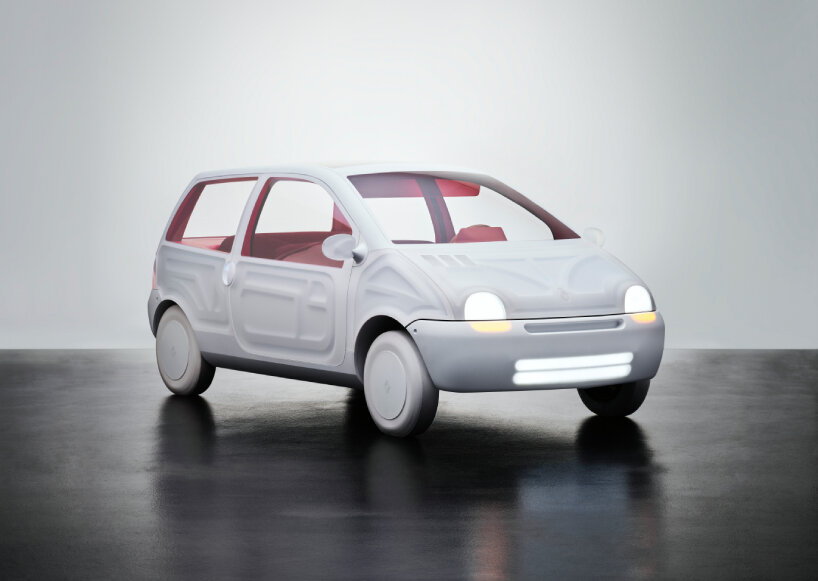
images courtesy of Renault and Sabine Marcelis | photos by Carl Kleiner (unless stated)
TRANSLUCENT ELECTRIC CAR WITH BURGUNDY STEERING WHEEL
Sabine Marcelis and Renault first looked into the features of Twingo that could leave lasting impressions on its viewers from the get-go: the quaint shape, the distinctive headlights, and the roomy interior albeit its modest size.
Shifting colors and materials took place until Sabine Marcelis and Renault came up with a Twingo that stays faithful to its original design while infused with the designer’s reverence for ambient, seductive, and rich color and design elements. Through Renault Twingo, Sabine Marcelis unravels an artistic freedom that is dear to her design philosophy, all the while treading the foreign territory of the automobile industry.
In an interview with designboom, Sabine Marcelis and François Farion, the Design and Innovation Director for Renault, sit down to ponder and look back to the birth of their Renault Twingo collaboration, the visual features unique to the electric city car including the disk-shaped transparent steering wheel, how the use of translucent materials came about, and the unfolding of the commemoration of the Twingo that brought all of them together.
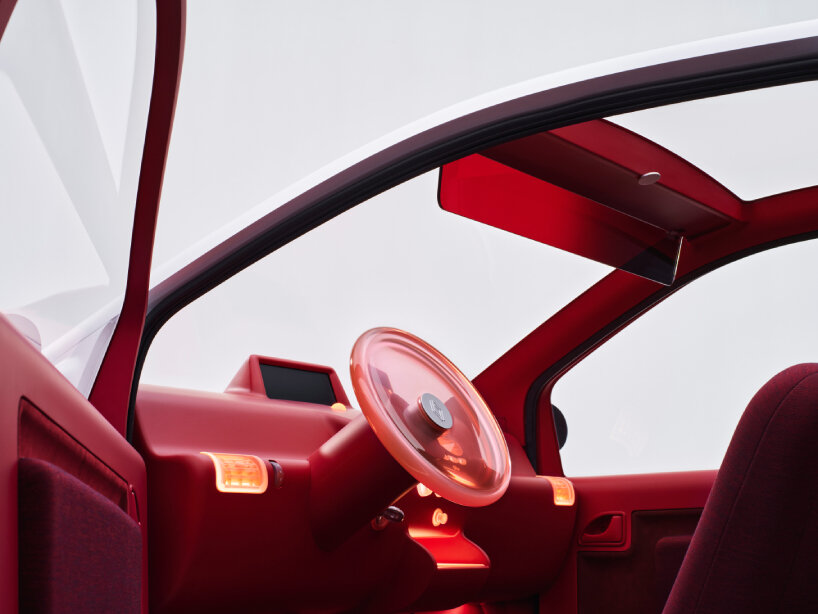
the choice of burgundy represents an elevated use of the original Twingo red
Interview WITH SABINE MARCELIS AND RENAULT’S FRANÇOIS FARION
designboom (DB): Can you tell us how your collaboration with Renault came about? Are you generally interested in automotive design? What was your design approach to reinterpreting Twingo?
Sabine Marcelis (SM): I was invited by Renault to design a Twingo to celebrate its 30th anniversary. I love working on projects that challenge myself and my team, and although I’ve never worked on a car before, it’s a category where design is highly present and serves many different functions. Designing a car is a complex task, and there are many restrictions to consider.
However, these restrictions often push creativity as you need to delve deep into details that can make all the difference. It was very insightful to reimagine the iconic details of the Twingo in a new light. I wanted to preserve the Twingo’s iconic elements while presenting them in a new and unexpected way through the use of materiality.

a disk-shaped transparent steering wheel is reminiscent of toy cars
DB: What are the design elements that define your version of the Renault Twingo? Could you highlight some of its standout features?
SM: Some elements that truly define the original Twingo are the ‘frog eye’ headlights, the interior elements like the vents and buttons, the silhouette, and the rear lights. My challenge was to elevate them without losing their unique identity, bringing all elements into a more luxurious realm activated by light and materiality.
I stripped elements back to their essence and pushed the theme of mono-materiality even further by transforming some elements into mono-elements, such as the sunshade and front seats, which have become singular elements.
The body and windows also form a single seamless element without any breaks, only a transition in opacity. One of my favorite features is the Key, which is the object that activates the entire car. We designed it in a translucent torus shape, a signature form I often work with.
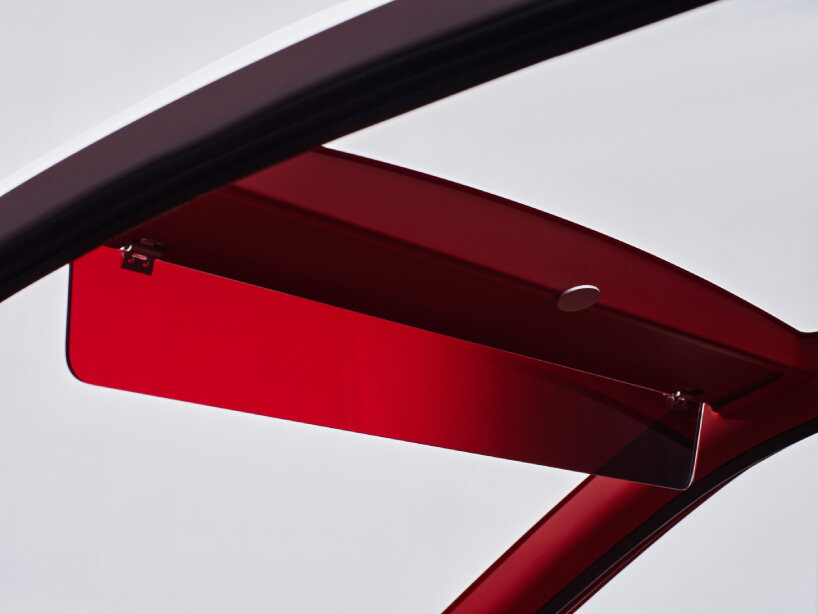
‘light allows me to activate static materials and create dynamic designs,’ Sabine Marcelis tells designboom
DB: What led to the idea of utilizing translucent materials in the car’s design? Why was it important to create light interactions through these materials?
SM: It’s a recurring theme in my work to play with light as it allows me to activate static materials and create dynamic designs. I wanted to bring that aspect to this project as well. While staying true to the lines and form language of the original Twingo, I aimed to present it in a completely different way simply by changing the materiality and allowing it to interact with external light and integrated light sources.
This approach also encourages exploration of the car from all sides as the perception of depth changes when viewed from different angles. By altering the transparency of certain elements, you can accentuate and reveal new aspects of its shape. I love that duality – it’s a combination of preserving the original while interpreting what it could become.
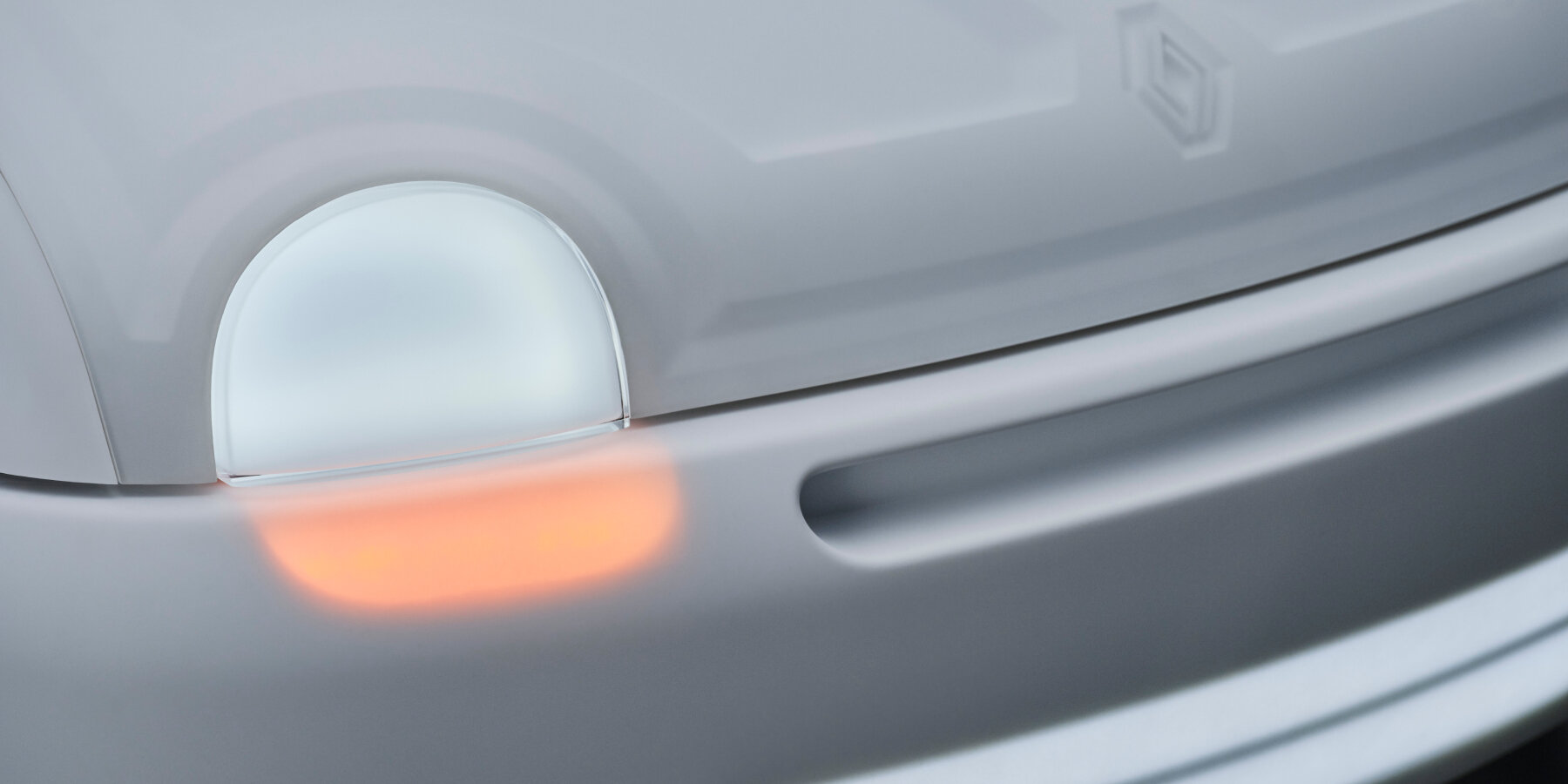
the intention was to keep the exterior devoid of color to bring out the interior’s color
DB: Can you provide some insight into the design process behind the all-red interior? How did this particular color scheme come about?
François Farion (FF): The development process was particularly thorough as the monochromatic theme had to be applied to various components such as translucent parts (airvents), transparent resin (steering wheel), vinyl floor, tufted carpet floor mats, paint (instrument panel), and fabric (seats), while maintaining overall harmony. Achieving the right shade of deep red was challenging: if it’s too bright, the result can appear cartoonish and overly sporty; if it’s too brown or sophisticated, the car may lack life and presence.
SM: There was a strong intention to keep the exterior devoid of color, allowing the materials themselves and their varying transparencies to take center stage. On the other hand, the interior needed to create a contrast by being rich, lush, and saturated in color.
The choice of burgundy represents an elevated use of the original Twingo red, presenting a deeper and more intense version of the color as an updated vision. This color also evokes a cozy feeling, enhancing the comfort and luxury experienced inside the car. The tactile experience of the interior is crucial to the concept, as each material used within it possesses a distinct texture and surface feel.
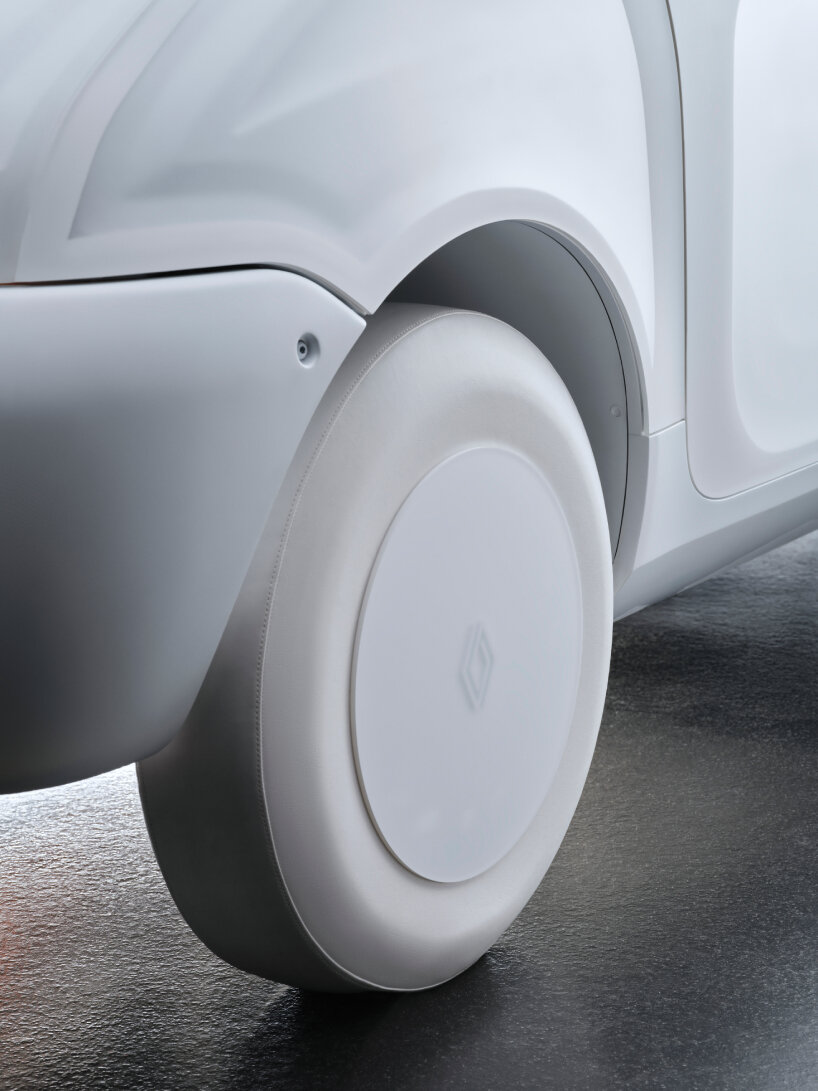
white is chosen as the exterior color of the Sabine Marcelis’ Renault Twingo
DB: The car features a quite distinctive steering wheel. How did you develop its design, and did the idea emerge with a primarily aesthetic or functional goal in mind?
FF: The development of the fully transparent steering wheel presented quite a challenge, particularly because we aimed to maintain its functionality. Therefore, we had to reinforce and extensively test the connection to the steering column before proceeding. The disk shape, reminiscent of toy cars, brings a smile to the face of everyone who tries it.
SM: It was once again about making the element as stripped back as possible. A single disk encompassing all the functionalities of a steering wheel, whose shape further reveals itself when the light catches the edges.
By keeping the body thin but making the edges slightly thicker, a comfortable grip is created for the hand, and the color saturation intensifies towards the outer edges where it is thicker. These subtle details make it an enjoyable object to discover and use. Functionality should not be compromised for aesthetics, and vice versa, I try not to compromise aesthetics for function too much either. It’s a delicate balancing act.
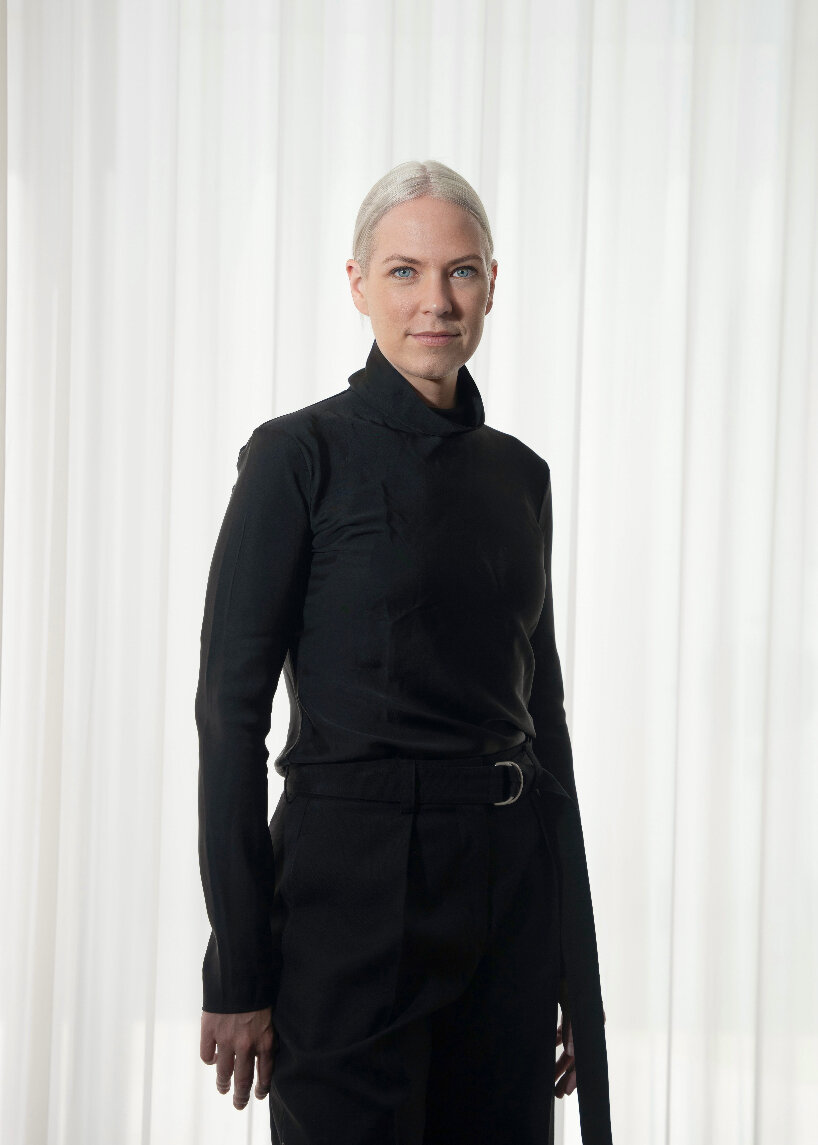
portrait of Sabine Marcelis | photo by Maxence Gautier
DB: In what ways could this collaboration impact the direction of automotive design and shape future trends?
FF: Working with non-automotive designers provides us with a unique perspective on every aspect of living with/in a car: questioning what is truly necessary and what is not, and providing new answers to a well-known problem. This was never meant to be a study related to current production cars, but rather the solutions, the novel view of the car as an object, and the research on materials make us think, or rethink, how cars can be designed.
SM: I think, indeed, it’s always interesting to get different perspectives on a project. There is even more flexibility when working on a concept car, and limits can be pushed much further than when it has to be production-ready. For example, the idea of a single sunshade replacing the need for a rearview mirror can be a seed for real-life integration in future cars. It’s really nice to discover why things are the way they are in automotive design, but also to question that and explore alternatives.
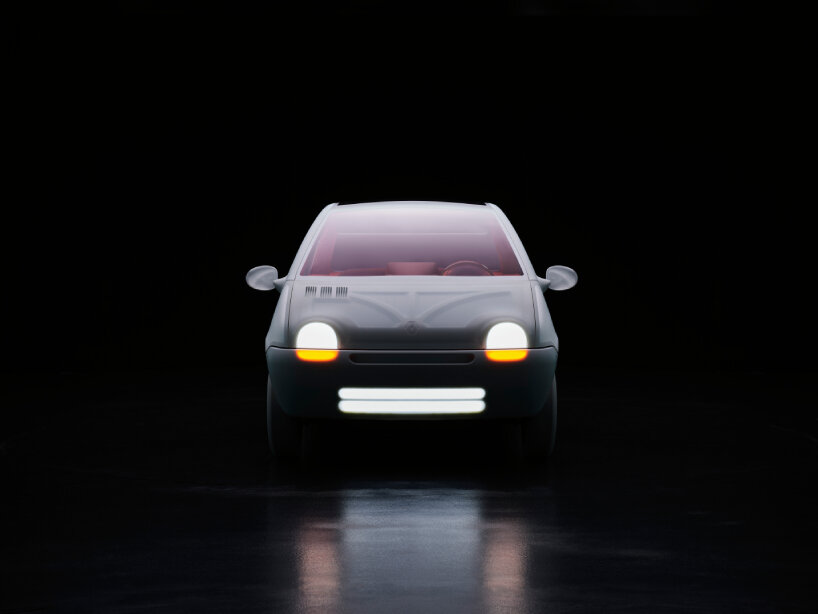
front view of Renault 1993 Twingo by Sabine Marcelis
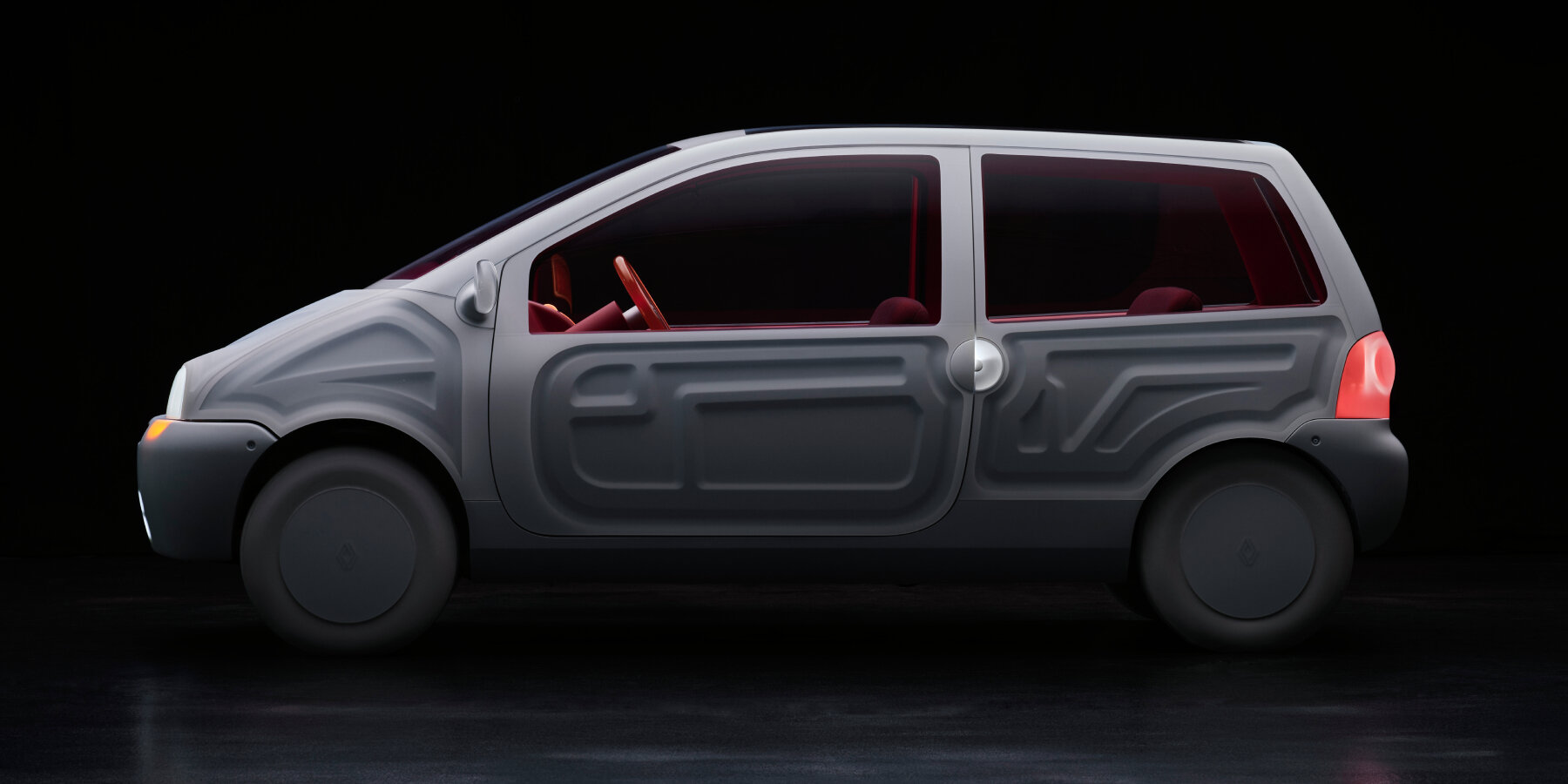
1993 Renault Twingo by Sabine Marcelis
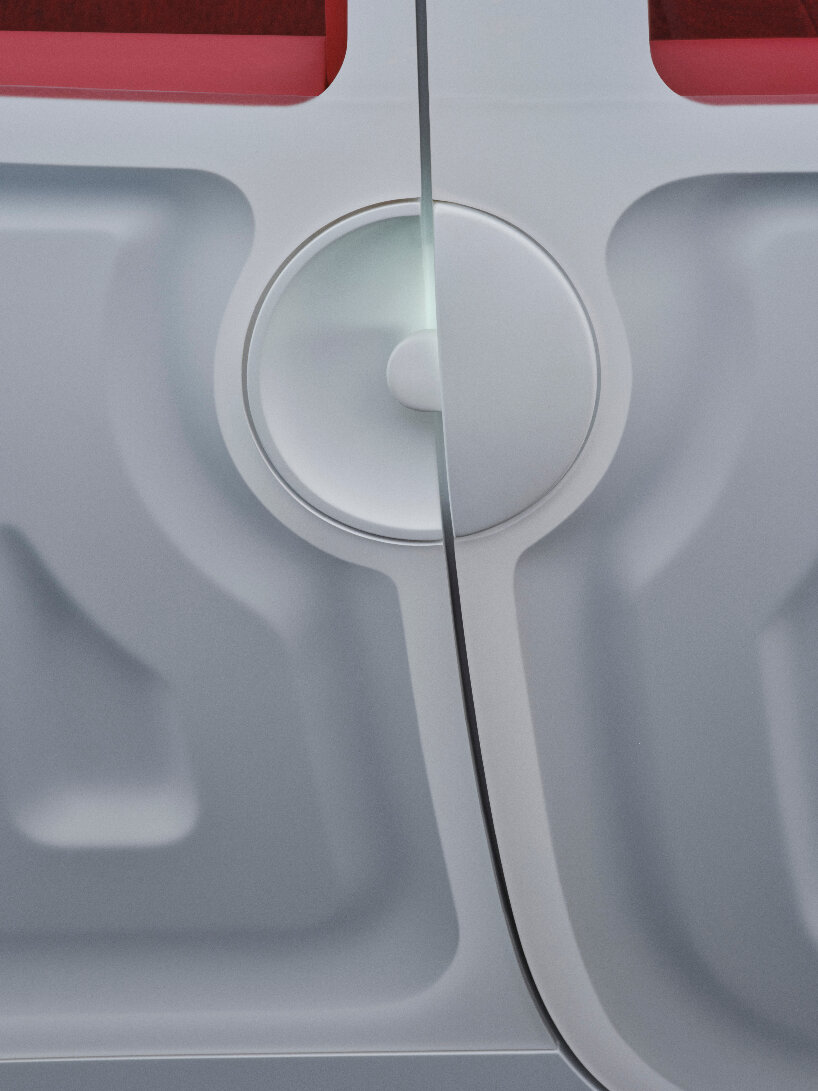
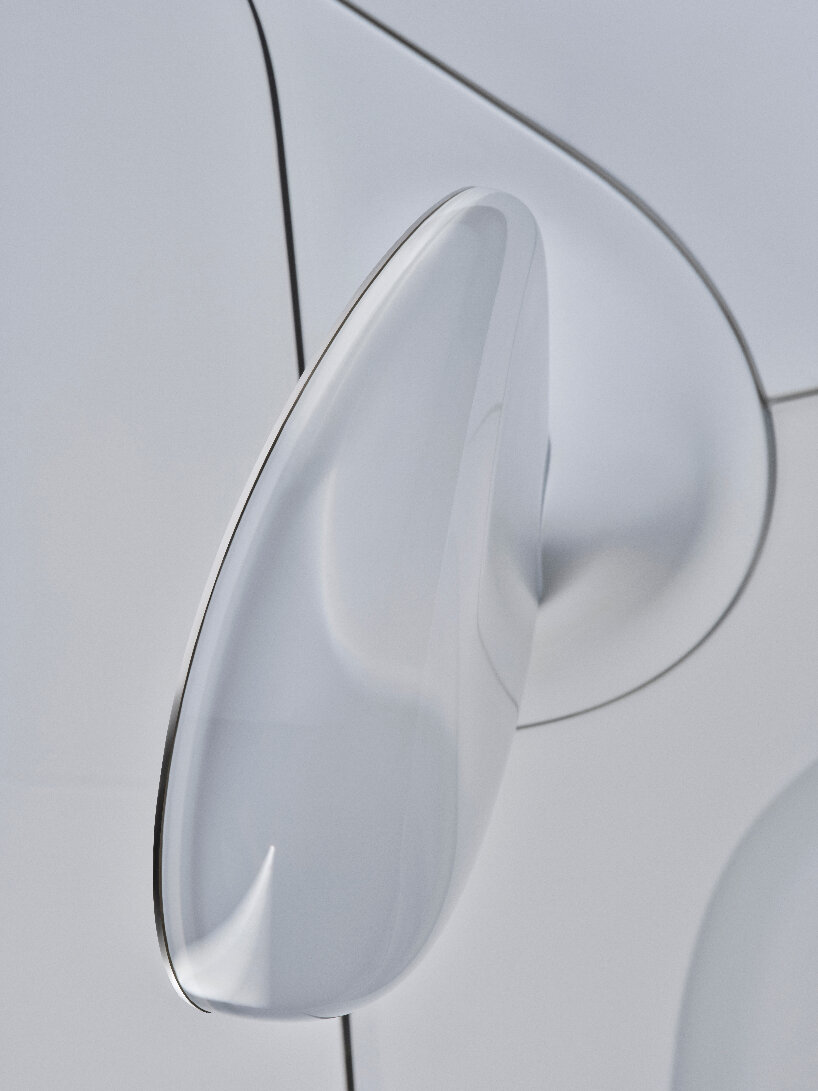
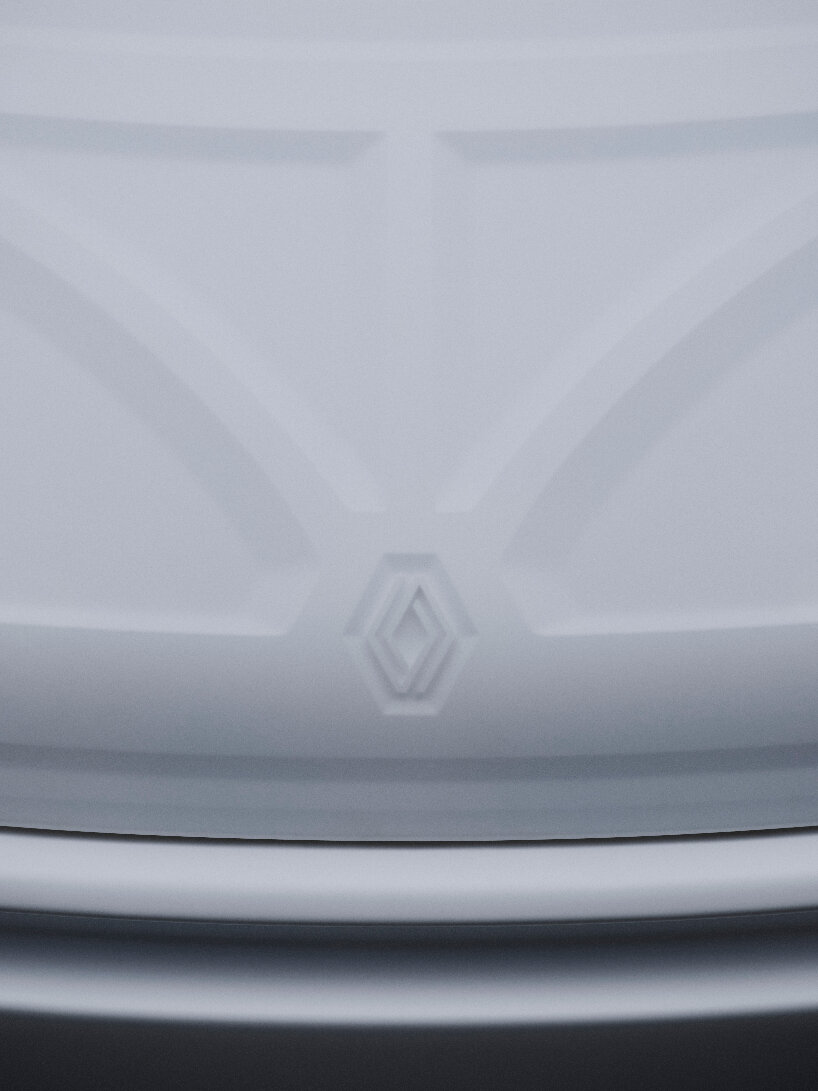
project info:
name: Renault Twingo 30th Anniversary
designer: Sabine Marcelis
company: Renault
